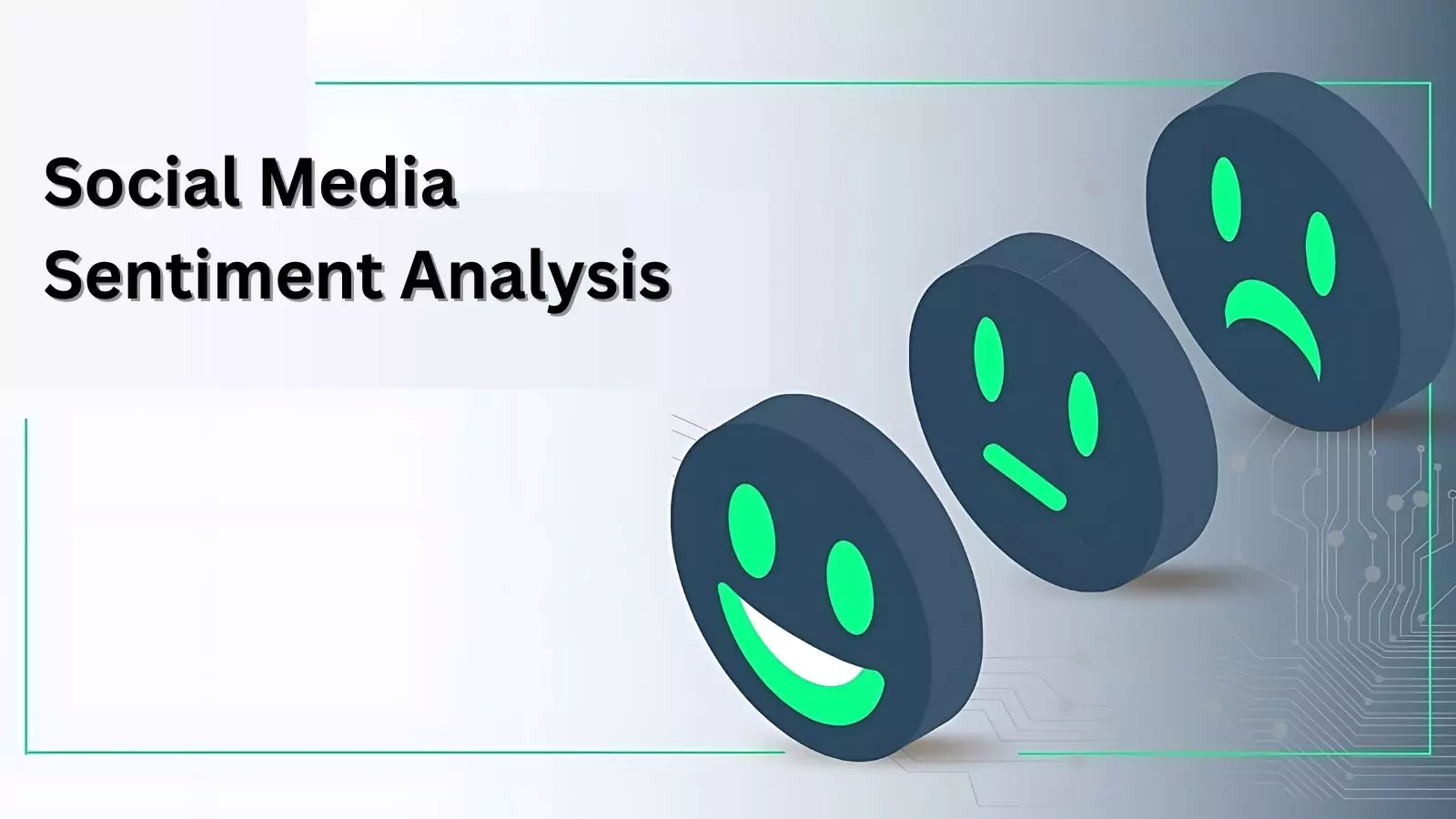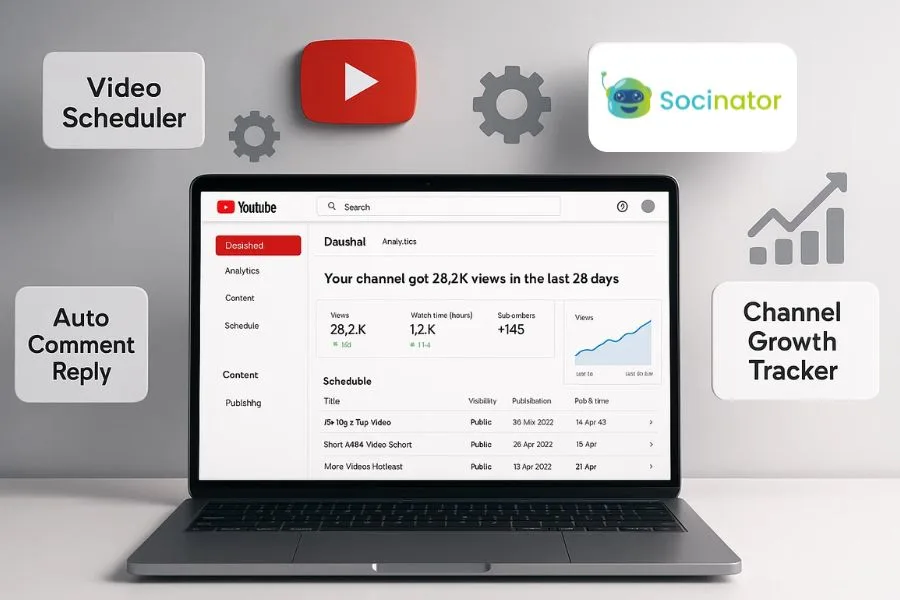Ever wondered what people truly think about your brand, products, or campaigns? Forget about follower counts and shares- social media sentiment analysis uncovers the true emotions behind the conversations.
By leveraging advanced analytics and AI, sentiment analysis helps you gauge the mood of your audience, identify trends, and make data-driven decisions to enhance your brand’s strategy.
In this blog, we will dive into social media sentiment analysis fundamentals, explore its importance, and guide you on implementing it effectively.
In a hurry? Listen to the blog instead!
Role Of Sentiment Analysis In Social Media
Social media sentiment analysis is essential for understanding the true impact of your brand’s online presence. Counting social mentions alone doesn’t give you a comprehensive picture. You need to dig deeper to uncover the actual sentiments behind those mentions and understand their true feelings.
A high volume of mentions might seem impressive initially, but if they are predominantly negative transformed.
Sentiment analysis reveals the emotions and opinions behind these mentions, allowing you to grasp public perception more accurately. This insight enables you to address issues directly, enhance your brand’s reputation, and make informed improvements.
Benefits Of Social Media Sentiment Analysis
 Do you ever wonder how your product makes customers feel? Are you meeting their expectations with your service? Social media sentiment analysis is a vital tool for today’s marketers. Understand how your audience feels about your brand, as it helps you improve customer sentiment analysis, engagement, and interactions.
Do you ever wonder how your product makes customers feel? Are you meeting their expectations with your service? Social media sentiment analysis is a vital tool for today’s marketers. Understand how your audience feels about your brand, as it helps you improve customer sentiment analysis, engagement, and interactions.
Here are some key benefits of social media sentiment analysis:
1. Gain Insights Into Your Audience
Mentions of your brand, whether positive or negative, are part of a larger conversation. Instead of focusing on isolated feedback, sentiment analysis helps you see the overall mood of your audience. A surge of positive comments is a strong indicator of brand success, while a wave of negative feedback can highlight areas needing improvement.
This analysis helps you understand how customers perceive your brand, allowing you to address issues and make decisions that resonate with their expectations.
2. Gather Actionable Data
Social media is a treasure trove of data. With consumers frequently tagging and discussing brands online, you have access to valuable information on how your brand performs over time and across various platforms. Analyzing sentiment data from sources like X (formerly Twitter) can reveal trends, evaluate campaign effectiveness, and uncover customer preferences. This ongoing feedback loop enables you to stay agile and responsive to your audience’s needs.
3. Connect With Customers Effectively
Social media sentiment analysis helps you determine the best times and ways to engage with your customers. Addressing negative sentiment publicly and resolving issues can significantly boost your brand’s reputation. Moreover, positive interactions, such as acknowledging compliments or thanking customers, can strengthen your relationship with your audience. You can ensure your engagements are timely and impactful by leveraging sentiment analysis,
4. Refine Your Brand Messaging
Understanding how users respond to your brand and their preferred types of content allows you to adjust your messaging for greater effectiveness. Sentiment analysis provides insights into what resonates with your audience, enabling you to tailor your messages to align with their values and interests. This refinement can lead to more engaging marketing campaigns and a powerful brand sentiment analysis.
By harnessing the power of social media sentiment analysis, you can gain a deeper understanding of your audience, make data-driven decisions, and enhance your overall brand strategy.
How To Run Social Media Sentiment Analysis in 3 Simple Steps
 Conducting a social media sentiment analysis combines both skill and strategy. It’s not just about the tools at your disposal, but also how effectively you use them. Let’s break down the process.
Conducting a social media sentiment analysis combines both skill and strategy. It’s not just about the tools at your disposal, but also how effectively you use them. Let’s break down the process.
Monitor Mentions
The first step in social media sentiment analysis involves closely monitoring your brand’s mentions across social media platforms. Social listening tools are crucial for this, enabling businesses to gather and monitor vast amounts of data in real time. These tools use sophisticated algorithms to scan through the constant flow of social media content, identifying and extracting relevant mentions.
By automatically scanning platforms like Twitter/X, Facebook, Instagram, and others, social listening tools create a comprehensive dataset of user-generated content for you to review. This wealth of user feedback and comments about your brand can then be analyzed to gain a deeper understanding of customer sentiment analysis.
Analyze Sentiment
The next step is to analyze the data you’ve collected to understand its meaning. A crucial part of this process is categorizing the sentiments into positive, neutral, and negative groups. For instance, here are some common words found in reviews and posts, categorized by sentiment:
- Positive: love, great, amazing, best, happy
- Neutral: okay, adequate, fine
- Negative: hate, dislike, worst, horrible, unhappy
You can manually analyze sentiment by exporting user comments and posts into a spreadsheet and using text filters to label each one. However, this approach may not provide a complete picture, as it doesn’t account for the sentiment expressed through images, videos, or emojis, which are common on social media. To analyze visual content, you may need to use more advanced tools or manually review and label each mention.
At the same time, maintaining regular engagement with your audience is crucial for a successful social media strategy. This is where tools like Socinator can be invaluable. By automating tasks such as likes and comments, Socinator helps you effortlessly show appreciation to your audience while boosting organic reach on different platforms. These auto-like and auto-comment features enable you to stay active on social media without spending countless hours on manual engagement, allowing you to focus more on in-depth social media sentiment analysis.
Calculate The Social Sentiment Score
After gathering and analyzing mentions, the final step is to calculate the social sentiment score. This score gives a quantitative measure of the overall sentiment in the collected data. While evaluating social sentiment analysis scores, it’s essential to monitor changes in sentiment over time, as sudden shifts may signal emerging issues, PR crises, or changing trends.
There are two primary methods for calculating the social sentiment score:
Positive Mentions As A Percentage Of Total Mentions: This method calculates the percentage of positive mentions out of the total number of mentions. Social sentiment analysis examples, if you received 250 positive mentions out of 1,000 total mentions in a month, your social sentiment score would be 25%, indicating that a quarter of your mentions are positive.
Positive Mentions As A Percentage Of Mentions With Sentiment: This method calculates the percentage of positive mentions relative to the total number of mentions where sentiment is expressed, excluding neutral mentions. For example, if you received 250 positive mentions, 100 negative mentions, and 650 neutral mentions, your social sentiment score would be 71.4%, as 250/(250+100) = 0.714. Neutral mentions are excluded to focus on mentions where users express sentiment about your brand, such as inquiries about your products or services.
The second method often yields a higher score than the first, but evaluating both methods is useful for understanding sentiment at different levels. Tracking these scores over time helps your brand assess the impact of various campaigns and strategies. While Socinator specializes in automating social media tasks and tracking engagement metrics, integrating it with your sentiment analysis efforts provides a comprehensive view of how your brand is perceived. This insight supports better reputation management, customer engagement, and strategic planning by offering valuable context for understanding overall sentiment trends.
Socinator: Social Media Automation Tools
 Socinator is an all-in-one social media automation tool designed to streamline and optimize your social media management. It caters to businesses, influencers, and marketers by providing a suite of features that automate various aspects of social media activity, helping users save time and increase their online presence.
Socinator is an all-in-one social media automation tool designed to streamline and optimize your social media management. It caters to businesses, influencers, and marketers by providing a suite of features that automate various aspects of social media activity, helping users save time and increase their online presence.
- Scheduling: This feature enables you to plan and automate content posting across various social media platforms at designated times. The advantage is a steady online presence, time savings, and the ability to engage with your audience at peak times without needing manual effort.
- Analytics: This feature offers comprehensive insights and reports on your social media performance, including metrics such as engagement rates, follower growth, and post reach. It helps you gauge the effectiveness of your social media strategy, spot trends, and make informed decisions to enhance your performance.
- Engagement: This feature centralizes the management of interactions with your audience, including comments, likes, and messages. It streamlines responding to and overseeing audience interactions, thereby enhancing relationships and engagement with your followers.
- Automation: This feature automates repetitive tasks like posting updates, responding to messages, and handling other routine activities. It cuts down on manual effort, boosts efficiency, and guarantees that social media tasks are performed consistently.
These features work together to provide a comprehensive solution for managing and optimizing social media activities, helping you to engage effectively with your audience and achieve your social media goals.
9 Strategies To Enhance Your Brand Sentiment On Social Media
Social media sentiment analysis tools can provide invaluable insights into your brand’s online visibility. But how can you leverage these insights to enhance your brand sentiment?
Here are some effective strategies:
Understand Your Audience:
Grasping your audience’s preferences is essential for improving brand sentiment on social media. Beyond general sentiment analysis, delve into specific audience segments to tailor your messaging and content. For instance, Crocs transformed its brand perception by responding to customer desires for uniqueness and style, leading to a significant boost in followers and revenue.
Address Negative Sentiment Promptly: When sentiment analysis highlights negative mentions, it’s crucial to address them swiftly. Ignoring or mishandling complaints can harm your brand’s reputation. Responding promptly and resolving issues can convert a negative experience into a positive one.
Enhance Customer Service:
Social media sentiment analysis benefits customer service by alerting you to emerging issues and allowing proactive outreach. Monitoring sentiment can help identify problems and address them before customers reach out. For example, Air Canada’s customer support team effectively resolved issues without direct tagging, demonstrating the power of proactive engagement.
Refine Brand Messaging And Product Development:
You can gain insights into what resonates with your audience by tracking sentiment trends and investigating changes. This information can inform your messaging strategy and product development. Zoom, for example, used social media sentiment analysis to identify issues with their platform and create targeted content to address them.
Assess Your Position In The Market:
Social sentiment helps you gauge your brand’s standing within your niche. This knowledge allows you to tailor your messaging to the right audience at the right time. Underknown’s shift to focus on survival content led to rapid growth and a new channel, demonstrating the impact of understanding audience preferences.
Leverage Influencer Marketing:
Influencers can significantly influence brand sentiment. Partner with influencers who share your brand values and have a genuine connection with their audience. Authentic collaborations, like those between Stanley and Bobby Berk, can enhance brand perception and expand reach.
Monitor Sentiment Trends Over Time:
Social media sentiment is dynamic, so regular tracking is essential. By tracking sentiment trends, you can assess the effectiveness of your strategies and make needed adjustments.
Focus on Your Strengths Emphasizing your brand’s strengths can positively impact sentiment. Wendy’s leverages humor, while Patagonia highlights its environmental efforts. Both brands successfully build powerful, positive sentiments by focusing on what they do best.
Detect Brand Crises Early:
Monitoring sentiment helps identify potential crises before they escalate. Quick responses can mitigate negative sentiment and prevent damage. BMW’s delayed response to a controversy serves as a reminder of the importance of setting up alerts for spikes in mentions and sentiment.
By implementing these strategies, you can effectively enhance your brand sentiment on social media and foster a more positive relationship with your audience.
Also Read:
How To Improve Your Customer Sentiment Analysis For Better Business?
4 Sentiment Analysis Examples & Best Practices To Inspire You
Wrapping Up
Social media sentiment analysis is an essential tool for businesses aiming to understand and engage with their audience more effectively. By analyzing the emotions and opinions expressed in social media conversations, you gain valuable insights into how your brand is perceived, what your customers value, and where improvements are needed. Tools like Socinator can simplify this process by offering advanced analytics and automation features to streamline sentiment tracking and reporting.
Staying attuned to social media sentiment helps you anticipate trends, adapt to audience needs, and build stronger relationships with your customers. Integrating social media sentiment analysis into your strategy not only drives better engagement but also supports informed decision-making. Embrace sentiment analysis and tools like Socinator to turn insights into action and elevate your brand’s presence and reputation in the digital landscape.
FAQs
Q. How is sentiment measured in social media?
Sentiment on social media is measured using natural language processing (NLP) and machine learning techniques to analyze data. This process involves determining the emotions and opinions behind social media posts and classifying them as positive, neutral, or negative.
Q. What is a good social sentiment score?
A good social sentiment score is determined by analyzing the frequency of positive and negative language used in customer interactions. A score below 50% suggests a predominantly negative customer experience, while a score above 80% indicates a positive customer experience.
Q. What are the challenges in sentiment analysis?
Challenges include:
- Sarcasm and Irony: Difficult to detect and accurately analyze.
- Contextual Understanding: Misinterpretation of sentiment due to lack of context.
- Language and Slang: Variations in language, slang, and abbreviations can affect accuracy.
- Ambiguity: Words with multiple meanings can lead to incorrect sentiment classification.

![How To Do Social Media Sentiment Analysis? [Complete Guide]](https://socinator.com/blog/wp-content/uploads/2024/08/how-to-do-social-media-sentiment-analysis-complete-guide.webp)




